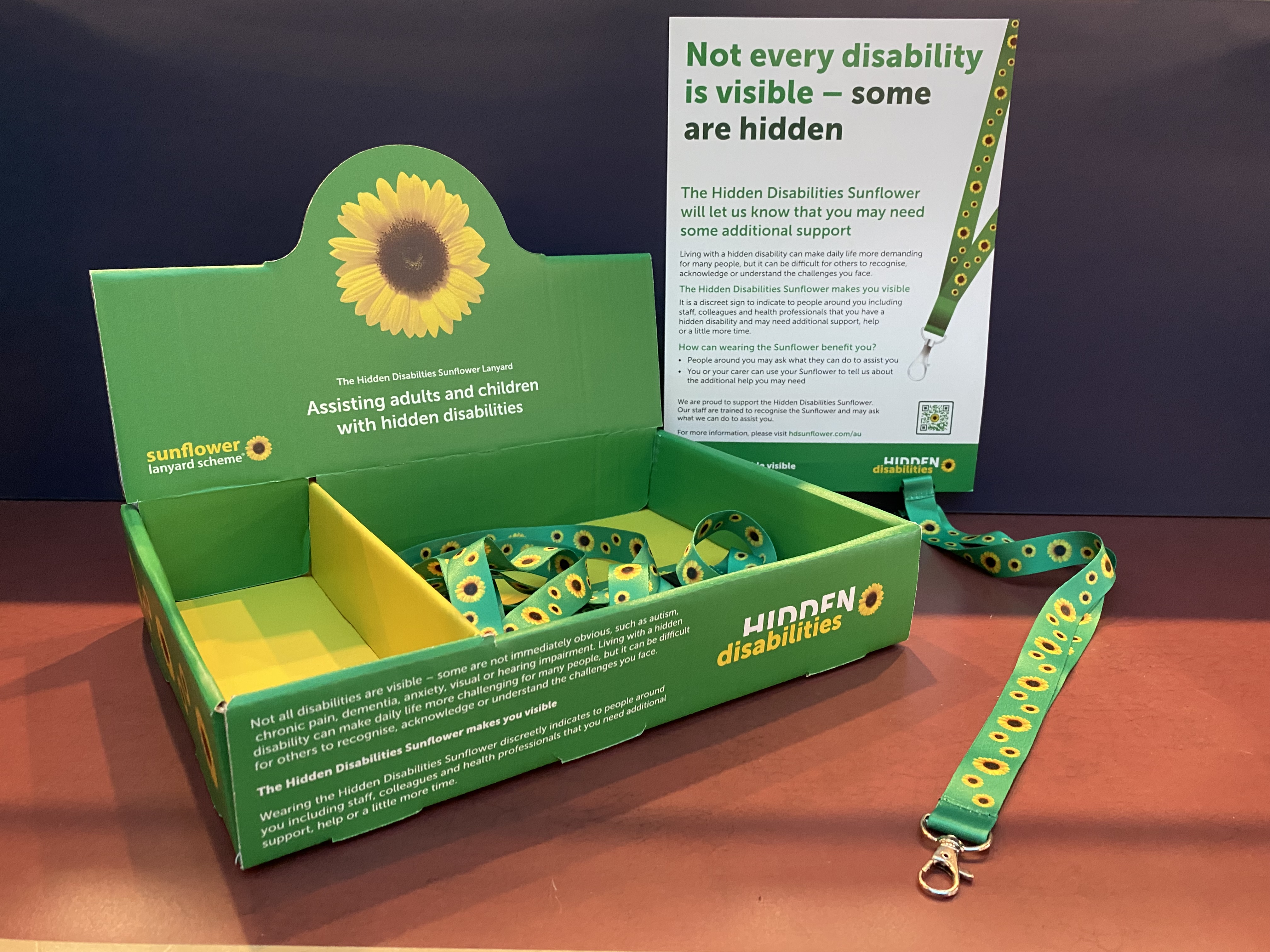Bringing brightness to hidden disabilities
Wearing a sunflower in the form of a lanyard or pin, indicates that the person wearing it may need more time, support, help, or just a little more understanding.
Globally, 1 in 7 people live with a disability. While some experience a disability that is visible, many have non-visible conditions or experience a combination of both. These disabilities can be temporary, situational, or permanent. They can be neurological, cognitive, neurodevelopmental, physical, visual, auditory, sensory, respiratory or a chronic health condition. Any one of these things can dramatically impact the mobility or processing of a person’s interactions.
MDC is blooming awareness for hidden disabilities through Sunflower lanyards. Used across New Zealand organisations like major airports, Air New Zealand, ANZ and Parliament, wearing a sunflower in the form of a lanyard or pin, indicates that the person wearing it may need more time, support, help, or just a little more understanding. “It’s a discreet but visual cue to help share awareness and understanding,” Andrew Leighton, MDC’s Safety and Wellbeing Advisor explains.
As Manawatū District Council continuously evaluates ways to improve its service levels, “it was an easy integration to create a further level of accessibility for our residents,” tells Leighton. Lanyards or pins are available from reception and are encouraged to be worn while clients are within Council facilities. They are then to be returned for others to utilise.
Although a new initiative to the Manawatū District, MDC encourages others to join in to build the awareness that when someone is seen wearing a sunflower in the community, more people will understand the important meaning behind it.

Caption: The Hidden Disabilities initiative can be found in the foyer of Manawatū District Council, Manawatū Community Hub Libraries, and Makino Aquatic Centre.
